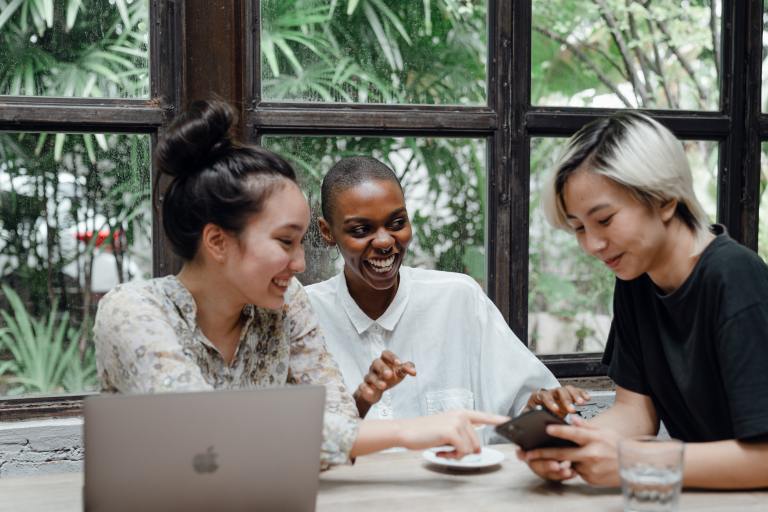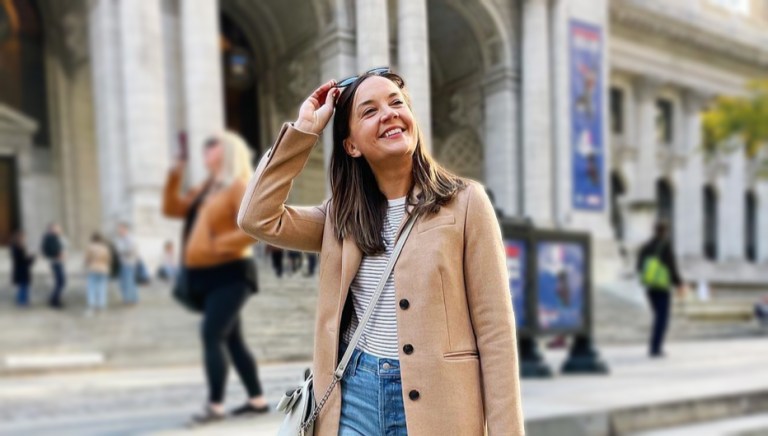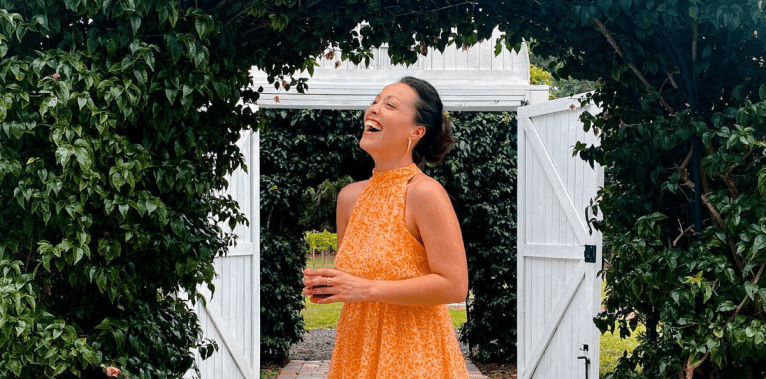My Life As A (Temporary) Blonde
With the world stuck inside, no one is probably thinking about their hair right now. I debated if I wanted to embrace my “just escaped from a crypt” pandemic look or play chemist and dye my hair blonde.
You might start to have rebellious thoughts too. And heck, if it looks horrid….strangers won’t see you, right?
I had always loved being a brunette, but when I lost my hair five years ago due to a chemo drug, my head became my canvas. My paintbrush was my wigs. Sometimes, I was a saucy redhead, a punk rock blue-haired princess, or a chic black-haired ingenue.
But no other hair color caused as much trouble as when I was blonde.
We all know the fairytale. The blonde Cinderella gets the guy while her dark-haired, evil step-sisters get an ill-fitting shoe and a one-way ticket to Spinsterville. When I first put that platinum blonde wig on my head, I felt like Phryne profaning the gods. Wasn’t the Halo Effect invented for blondes?
I was about to find out.
The first time I took my yellow locks out for a spin, I thought I had toilet paper stuck to my shoe. Men were staring. Not just staring, ogling. As a brunette, I rarely had guys buy me drinks. As a blonde, men treated me like a lost golden retriever puppy that needed bottle-feeding. My friends began to joke that my wig was paying for itself.
And it wasn’t just in bars that my hair made me stand out like a lighthouse beacon. On the streets, drivers honked their horns. Doors were magically held open for me. When strangers spoke to me, they called me “honey” and “sweetie.” My hair was giving me a sweet tooth.
But while I was getting more attention as a blonde, I noticed something else— it wasn’t always the attention I wanted. In fact, I was being treated with a lot less respect. People slowed down their speech and used smaller words. Eye contact was often averted by both sexes. And it became oddly harder to get a drink from female bartenders. I felt like people saw me first and heard me second.
One night, I was out at a local bar with my ex-boyfriend, when a drunk guy sitting next to us glanced over at me and said loud enough for everyone to hear, “There’s a lot of sluts here tonight.” My ex-boyfriend immediately asked the drunk guy to meet him outside so he could “elaborate” on his comment. Thankfully, one of my friends stepped in-between them, bought the guy a drink, and got him to apologize to me.
I accepted his apology but felt tremendous guilt. A relaxing night out almost erupted into a barroom brawl. I had caused this drama and although you could say it was a coincidence, I don’t think so.
Because I think it was the wig’s fault.
I started to wonder — do people treat blondes differently? And if yes, why?
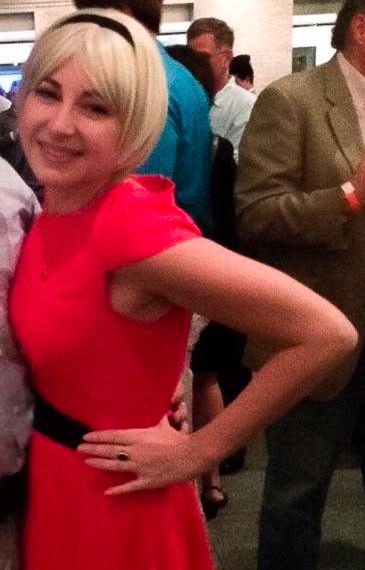
A recent study from the Journal of Social Psychology might have some answers. Researchers showed 110 men pictures of women with black, red, brown, and blonde hair. The men overwhelmingly found the blondes sexier. This research was consistent with an earlier study by Nicolas Guéguen, titled “Hair Color and Courtship.” Instead of using pictures, researches put a woman in a blonde, brunette, and red wig and found men were more likely to approach the woman in the blonde wig.
One theory is that because our hair darkens as we age, lighter hair is perceived as more youthful and healthy. Another theory is that men are attracted to genetic rarities. Only 2% of the population is naturally blonde.¹ (This statistic will only surprise men.)
That’s great news if you are a blonde, but there is a downside. The men in the Journal of Social Psychology study also rated blonde women as more “promiscuous.”
Well, that explains the slut comment.
Blondes causing trouble is nothing new
Throughout history, blonde has been the color most entangled with controversy. The Ancient Greeks idolized blondes from the moment Aphrodite emerged from her seafoam wearing nothing but her birthday suit and a cascade of golden locks. The Ancient Romans found blondes so lusty that they required prostitutes to identify themselves by wearing yellow wigs.
Women went to great lengths to get that sun-kissed look too. One ancient hair dye recipe called for ladies to slather their hair with pigeon poop and ashes. Then she either pee-ed directly on the hair or dunked her head in a pot of urine. The ammonia from human urine acted as a bleach, stripping the hair of its natural color. It sounds kind of unpleasant.
By medieval times, the Catholic Church picked up the anti-blonde torch. Priests rallied against blondes as the Jezebels of Christianity. Supposedly, Eve had blonde hair and she got Adam kicked out of the garden. Mary Magdalene was blonde and was obviously up to no good.
It was artists who stopped the blonde bashing. Like any good PR campaign, blondes just needed a wholesome spokesmodel to repair the bad girl image. The only woman up for the task — The Virgin Mary.
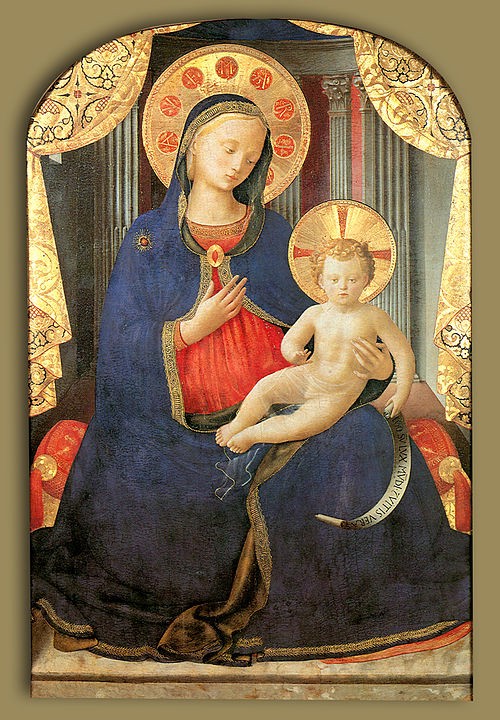
Until then, Mary had always been portrayed with dark locks peeking out from under her pious veil. (A natural assumption to make considering Mary was from the Middle East.) Dark hair had long been the color synonymous with virtue. So we can imagine the collective gasps when the masses first saw a blonde Virgin Mary.
Such was not the case. Artists had just started mixing gold into their paint, so everyone was enthralled with the rich, luminescent halo of yellow hair. Blondes were back. And sparkly.
By the Renaissance, Botticelli was painting golden-haired beauties surrounded by an entourage of angels with equally blinding shades of yellow hair. These paintings caused Italy’s dark-haired belladonnas to stampede to their local apothecary for goat dung. The ammonia in the dung died their hair lighter but often led to a curious shade of orange instead of blonde.
In the 1930s, blonde hair got another revival when Jean Harlow lit up the big screen with her shining platinum hairdo. Peroxide sales soared, and women doused their hair in laundry bleach to copy Harlow’s sex appeal.
By the 1950s, Marilyn Monroe personified the blonde sex kitten while Clairol advertising campaigns asked that infamous question, “Is It True… Blondes Have More Fun?”
My hair eventually grew back, and I decided to keep my dark hair. I still sometimes throw on my blonde wig to cause a little trouble. I have often wondered if people treated me differently as a blonde because I acted differently. Maybe I acted more effusive, uninhibited, and playful than my reserved brunette self.
Or maybe it is true. Blondes really do have more fun.
This article was originally published on PS I Love You. Relationships Now.


